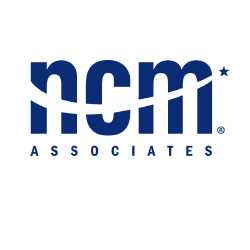Educating Service Personnel

Technicians and service advisors are extremely productive members of your dealership team. Generating between $10-30K a month in gross profit, each individual in the service department is practically a small-business owner when considering the high levels of revenue and expenses that they manage. So why are they left clueless when it comes to the core metrics that drive a profitable operation?
Some of the more progressive dealers, general managers, and service managers in North America will allot time each day/week/month to educating their service personnel on the financials. This ensures that everyone understands the goals of the department and their role in achieving those goals. Moreover, this type of interaction can help instigate and facilitate difficult but important discussions when it comes to expected productivity levels, pay plan changes, and targets for individuals and teams.
Here are a couple exercises that you should do with your productive service personnel:
- First and foremost, technicians and service advisors need to understand gross margins, effective labor rate, and hours. It goes without saying that all of these should be tracked daily, weekly, and monthly by individual, by labor category, and for the whole shop, preferably on a whiteboard. But how many people in your service department actually understand what these topics mean or how they are affected? Ask yourself, what are the two money streams that determine gross margins? For such a basic calculation, there is a surprising lack of knowledge on how to improve this core metric among ownership and management, forget about the foot soldiers! What you charge the customer and what you pay the technician are the only determining factors in your margins, so if your margins are low you are either paying too much or not charging enough. And outside of door rate or pay plans, your techs and advisors need to recognize that margins are affected by discounting, poor labor distribution, and inaccurate op codes, among other things. Does your team have any idea how to calculate effective labor rate or how to improve it? Shouldn't they? And what about hours? Does everyone understand that this is your only product in the service department? Sure, you sell high-end hours and cheap hours, but just like sales sells cars, you sell hours.
- Hold a check signing party! This is where you invite everyone into your office to sign the checks for all expenses that are required to keep the department operating. While the activity in this exercise may have changed over the past 20 years (How many checks do you still sign for monthly expenses?), there is great value in expense transparency. Many of your productive employees think you make millions in service, but have no concept of how expensive it is to run that department. Most would be surprised at the astronomical outflows you have each month for salaries, equipment, insurance, etc. Don't forget to include a fixed expense allocation, usually around 30% to service. And, if you want to be really thorough, include the cost of sales (i.e. tech wages) in the calculation, since these do not show up as an expense category on the financial statement.
- Calculate your breakeven point and track it monthly. How do you calculate your breakeven point in service? There are many ways, but the easiest is to take your total expenses (as calculated in the previous exercise; don't forget the fixed expense allocation and tech wages) and divide by your departmental effective labor rate. This will tell you how many hours you need to sell in the service department in order to generate enough revenue to cover expenses. This should be a prominent metric on your whiteboard and a rallying point for the entire department each month. More importantly, this opens the conversation into how productive the team (and consequently, individuals) needs to be. By far, the most important area of focus in any department of a dealership is setting expectations and levels of accountability. This exercise will make those discussions much easier.
Technicians and service advisors have so much control over the success of this department, why wouldn't you educate them on the business behind the business? Holding regular sessions to bring them into the fold will help everyone strive for the same goals and allow management to better monitor and motivate their staff's productivity.
